ISSN
MAIN MENU
SUBMISSIONS
PUBLICATIONS
INFORMATIONS
PARTNERSHIP
TOOLS
![]()

Berdasarkan Pedoman Tugas Akhir Fakultas Bahasa dan Seni 2022 dan panduan penulisan artikel pada jurnal Franconesia, Prodi Pendidikan Bahasa Prancis menetapkan ketentuan publikasi sebagai salah satu syarat kelulusan sebagai berikut.
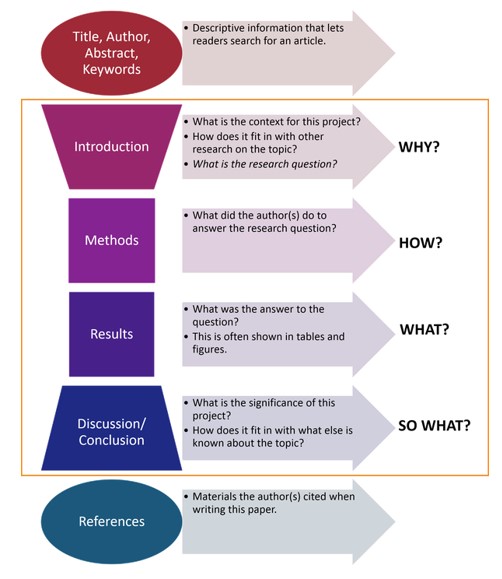
Penerbitan artikel pada jurnal Franconesia dilakukan sebanyak dua kali dalam setahun, yaitu pada semester genap dan ganjil. Adapun alur dan lini masa secara terperinci digambarkan sebagai berikut.
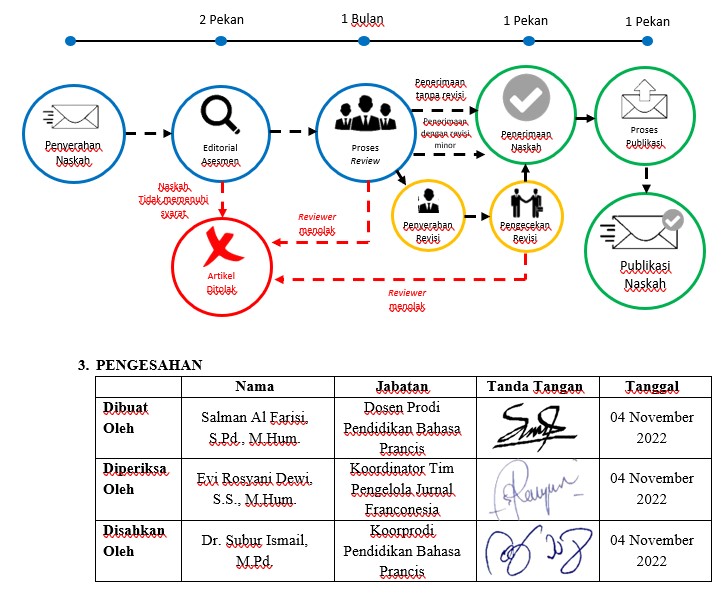
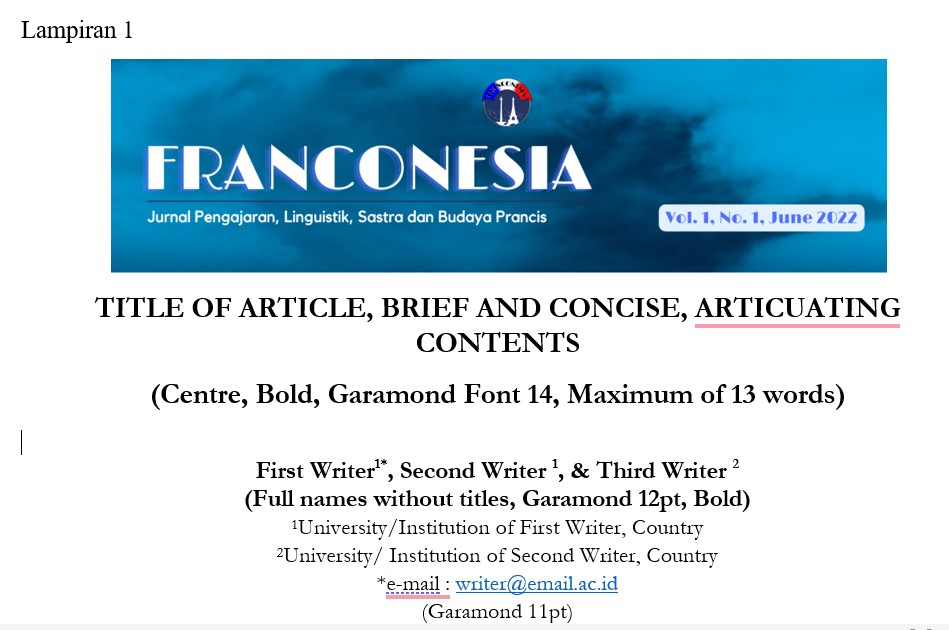

INTRODUCTION
Containing backgrounds of the problem, depiction and further scrutiny of the problem or the gap between what is idealized and what is the reality, supported by relevant theories and recent research, and objective of the study. The problem should offer a new research value or benefit as an innovative endeavor, written more or less 20% of the whole body including the title and abstract.
Written out briefly, concisely, clearly, but adequately so that it can be replicated. This section contains explanation of the research approach, subjects of the study, conducts of the research procedure, use of materials and instruments, data collection and analysis techniques. These are not theories. In the case of statistical uses, formulas that are generally known should not be written down. Any specific criteria used by the researcher in collecting and analyzing the research data should be completely described, including the quality of the instruments, material of the research, and procedure of data collection. This section should be written about 10% (for qualitative research) or 15% (for quantitative research) of the body.
For ease of reading and comprehension, findings are presented first followed by discussion. The Findings sub-title and Discussion sub-title are presented separately. This section should occupy the most part, minimum of 60%, of the whole body of the article.
Results of data analyses can be presented in tables, graphs, figures or any combination of the three. Tables, graphs, or figures should not be too long, too large, nor too many. The writer is advised to use decent variation in presenting tables, graphs, or verbal description. All displayed tables and graphs should be referred to in the text. The format of tables is shown in Table 1. Tables do not use column (vertical) lines and row (horizontal) lines are used only for the head and tail of the table. The font of the table entry may be reduced. Figures in the table should not be over-repeated in the narration before or after the table.

Figures are written in the following format. For scripts written in Indonesian, thousands are written out using periods; for example: 1200300 is written as 1.200.300. Decimal points are marked with a comma followed by two number digits; e.g.: 12,34. For figures lower than 1, the zero must be written; e.g.: 0,12.
For scripts written in English, thousands are marked using commas; e.g.: 1200300 is written as 1,200,300. Decimal points are marked with a period followed by two number digits; e.g.: 12.34. For figures lower than 1, the zero is not needed; e.g.: .12.
For mathematical symbols or notations, the alphabet is italicized, but Greek letters are written upright using the correct symbols. The equal sign is given a punch space before and after;
e.g. (English format): r = .456; p = .008. For statistical values having degrees of freedom such as
t, F, atau Z, the figure of the degree of freedom is written in braces such as t(52) = 1.234; F(1, 34)
= 4.567. Statistical calculation for hypothesis testing should be completed with effect sizes; for example: the t-test using cohen’s d, the F-test using partial eta squared, or other post-hoc tests in line with the references under consideration.
For qualitative research, findings should substantially be presented in a condensed report based on the results of a rigorous qualitative data analysis. Tables, diagrams, charts, or other data visualizations maybe presented to facilitate ease of reading. Authentic evidence from empirical data (e.g., excerpts from interview transcripts, field-notes, documents) should be presented in a reasonable amount of texts that do not surpass the authors’ statements on their findings.
Intended to give interpretation and meaning to the results of the study in accordance with the theories and references that are used. It is not merely used to present findings. Interpretation should be enriched with referencing, comparing, or contrasting with findings of previous research published in reputable, not predatory, journal. It is advisable to integrate findings into collection of theories or established knowledge, development of a new theory, or modification of existing theories. Implications of the research findings are given.
Referencing in the body of the article uses braces: (...); an example with one author: (Retnowati, 2018); two authors: (Nurgiyantoro & Efendi, 2017), and three to five authors: (Retnowati, Fathoni, & Chen, 2018) for the first mention and (Retnowati et al., 2018) for the subsequent mentions. Names of authors can also be mentioned outside the braces; e.g.: Nurgiyantoro & Efendi (2017) in accordance with the writing style. For direct quotation or particular facts, the page number (numbers) is needed; e.g.: (Nurgiyantoro & Efendi, 2017: 144), (Nurgiyantoro & Efendi, 2017: 144-146).
It is advised not to use too many direct quotations. Should one be used, however, it is written in the (“...”) format in the paragraph for quotation of fewer than 40 words. For a direct quotation of more than 40 words, it is written in a separate block (outside the paragraph), half an inch indented from the left margin, with no quotation marks, and followed by (name of the author, year: page number).
For a core statement taken from a number of references, all the sources should be acknowledged in an alphabetical order using a semicolon (;); e.g., (Sahlberg, 2012; Schunk, 2012; Retnowati, Fathoni, & Chen, 2018). For translated sources, author of the source book, year of the translation, and title of the source book are mentioned. In the case of referencing two sources with the same author and year, the lower-case letters are used after the year; e.g., (Schunk, 2012a) and Schunk (2012b).
Intended not only to repeat findings. Conclusion contains substantialization of meaning. It can present a statement of what is being expected as proposed in the “Introduction” and what has happened as reported in the “Findings and Discussion” so that there is compatibility. An addition can be made concerning the prospects of enriching the research findings and developing the potentials for future research.
Intended to pay gratitude to sponsors, fund bearers, resource persons, and other parties that have important roles in the study. The writer needs to ask for permission from persons or institutions for mentioning them in the acknowledgements. Editors need not be acknowledged in written.
Reference entry is arranged in the alphabetical order. All that are referred to in the text must be listed in the reference list and all that are written in the reference list must be referred to in the text. It is advisable to use current journal articles from Web of Science/Scopus indexed journals as reference sources, rather than books or proceedings.The writer is oblidged to list all the references in the valid way according to the original sources and URL (https of the DOI (digital object identifier) when available), particularly for entries from journals. In the case of cities of publication, differences should be made in writing cities of the USA and cities outside the USA. For example, cities in the USA are listed together with the intials of the state; e.g.: for Boston of Massachusset: Boston, MA.
Examples of reference entries:
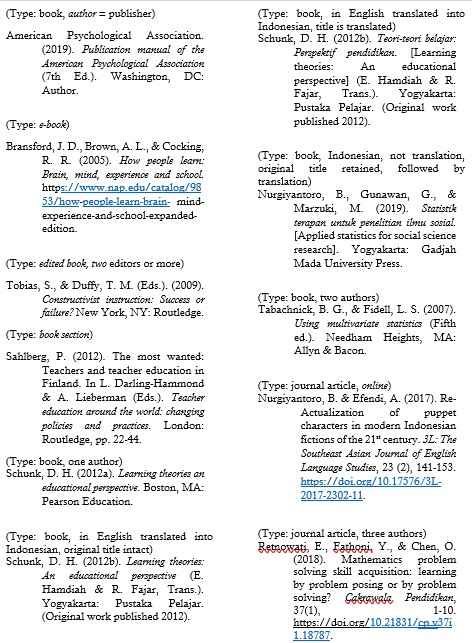
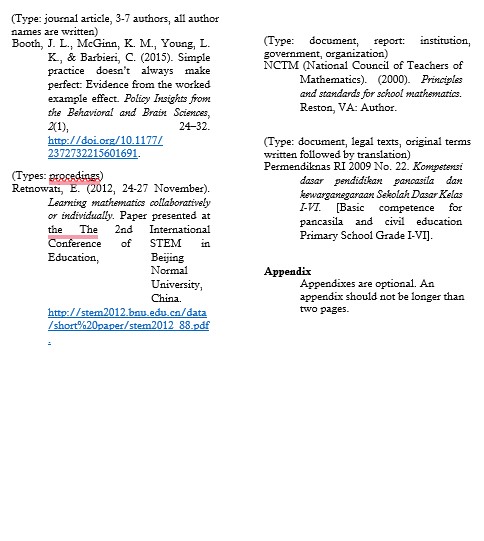
Lampiran 2
FORMULIR REVIEW NASKAH FRANCONESIA
Judul Artikel :
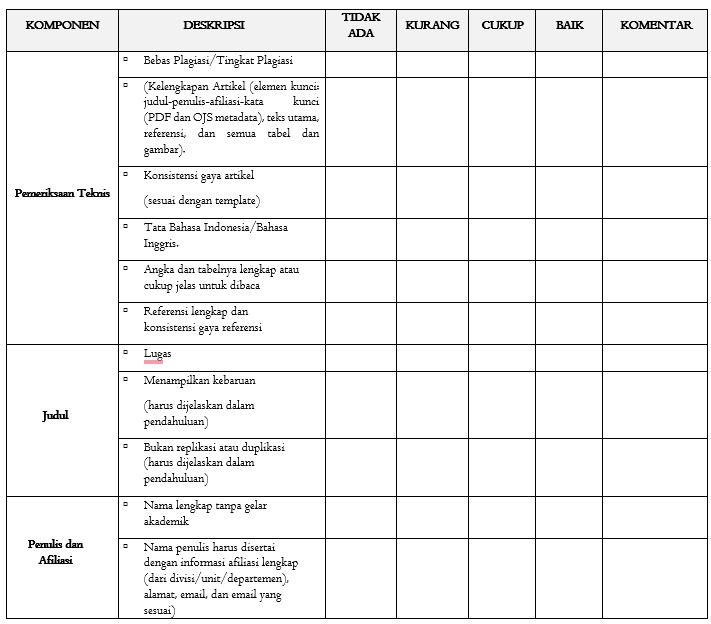
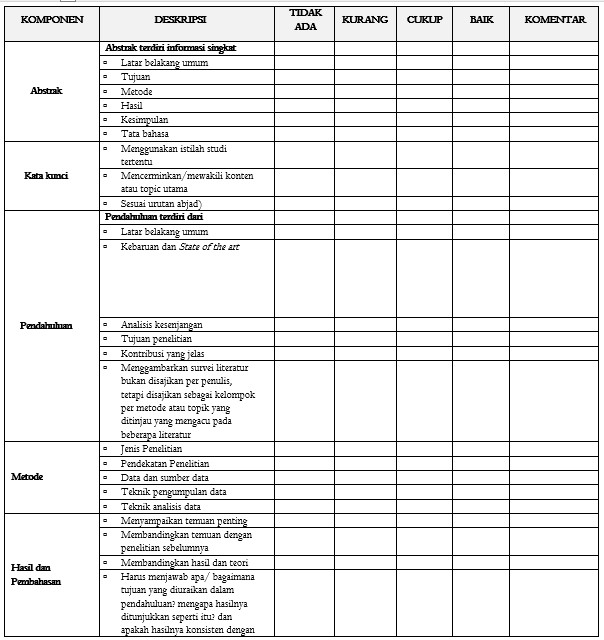

Published by
Department of French Language Education
Kampus A, Gedung E, Universitas Negeri Jakarta
Jl. Rawamangun Muka Raya, RT.11/RW.14, Rawamangun, DKI Jakarta 13220, Indonesia
Email : franconesia@unj.ac.id
Instagram : franconesia_unj

This work is licensed under a Creative Commons Attribution 4.0 International License
